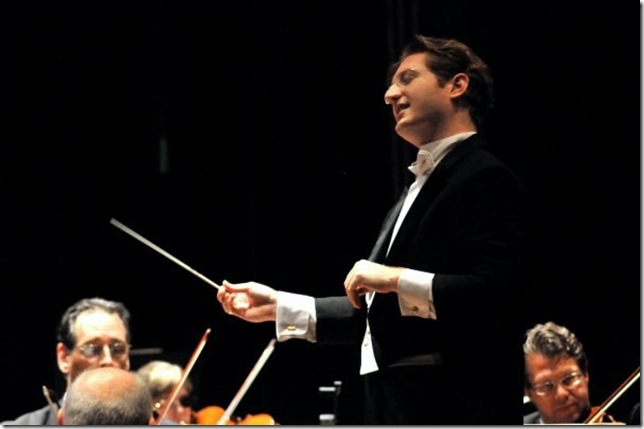What a difference a year makes: Conductor Ramón Tebar has improved the quality of the Palm Beach Symphony by sheer force of will and good leadership.
This happy band has jumped 10 notches on the Richter scale of music-making; it is unrecognizable from the orchestra we heard last year.
At the opening concert of the season Wednesday night at the Society of the Four Arts, the orchestra members played like demons possessed. And this normally taciturn audience turned into keen enthusiasts, giving the orchestra and conductor three recalls instead of the usual one.
My guess is that there has been some orchestra-building over the summer months. The first-violin section has certainly been enhanced to positive effect. The intelligent public sensed improvements had been made, and they showed their appreciation with rousing applause.
Billed as Mozart’s Last and Beethoven’s First, the program tried to show the link between these two Classical-era greats. Mozart was 14 when Beethoven was born in 1770. They met once in Vienna, but all their musical associations crossed paths as young Beethoven matured.
A confident downbeat from Tebar began the evening with a finely played overture to La Clemenza di Tito (K. 621). The woodwinds were amazing and the strings, sweet as could be.
Mozart’s Jupiter Symphony (No. 41 in C, K. 551), his last, was next. Tebar set a fast pace and there was a lot of good playing from all sections of the orchestra. This long movement, marked Allegro vivace, would have been a symphony in earlier times (we owe length of symphonies heard after to 1788 to Wolfgang).
The second movement, Andante cantabile, opened with caressing sensitivity from the players; there was a willingness to “play down” the notes in the interest of less volume. Smooth repeated notes from the horns underscored the many tunes Mozart spins. The music was dreamlike in quality, the orchestra, almost thrilling in its restraint.
Third came the minuet. After some lovely opening bars from the woodwinds, strong string playing was often interrupted by the brass and percussion sections to great effect. The final movement begins with a workmanlike fugue passed around the orchestra at breakneck speed. The winds take up the melody, interrupted by sudden outbursts from the strings until a final fugue brings this great symphony to an end.
And it went well: Happy faces in the orchestra, warm applause in the hall. Even the acoustics appeared to be cooperating.
Shifting to Beethoven in the second half of the program was an education in contrasts, and growth of another kind. Close on 12 years had elapsed from the writing of the Jupiter Symphony to Beethoven’s First (in C, Op. 21) in 1800.
Even in this early orchestral essay, Beethoven begins to integrate the whole orchestra, using coloristic patterns with the sections playing together and then apart, setting the style for orchestrators of the future to blend and mix, using the orchestra as an artist’s palette.
Lovely long chords open the First Symphony, with a blending of brass and strings that marks the stamp of Beethoven’s future compositions. The orchestra sounds much heavier with the same number of players.
There’s no mistaking the second movement is all Beethoven. There’s a special quality in this slow movement, blending grace and charm and with. The music is totally captivating.
Excitement and perhaps a little tiredness crept into the opening bars of the third movement, a minuet. The orchestra tried to “get away” from Tebar with a faster pace. He skillfully drew them back with clear signals and forceful leadership. An iron will, unspoken yet well-communicated.
Controlled, beautiful string playing opened the last movement, which skips along, each section bragging with a tune, only to be answered by another section making the same claim.
Conductor and orchestra had accomplished much in a single night, and truly sharpened the appetite for Jan. 30, when the orchestra will present two major Romantic symphonies – Tchaikovsky’s Fourth and Dvořák’s Ninth – at the DeSantis Chapel on the campus of Palm Beach Atlantic University.
